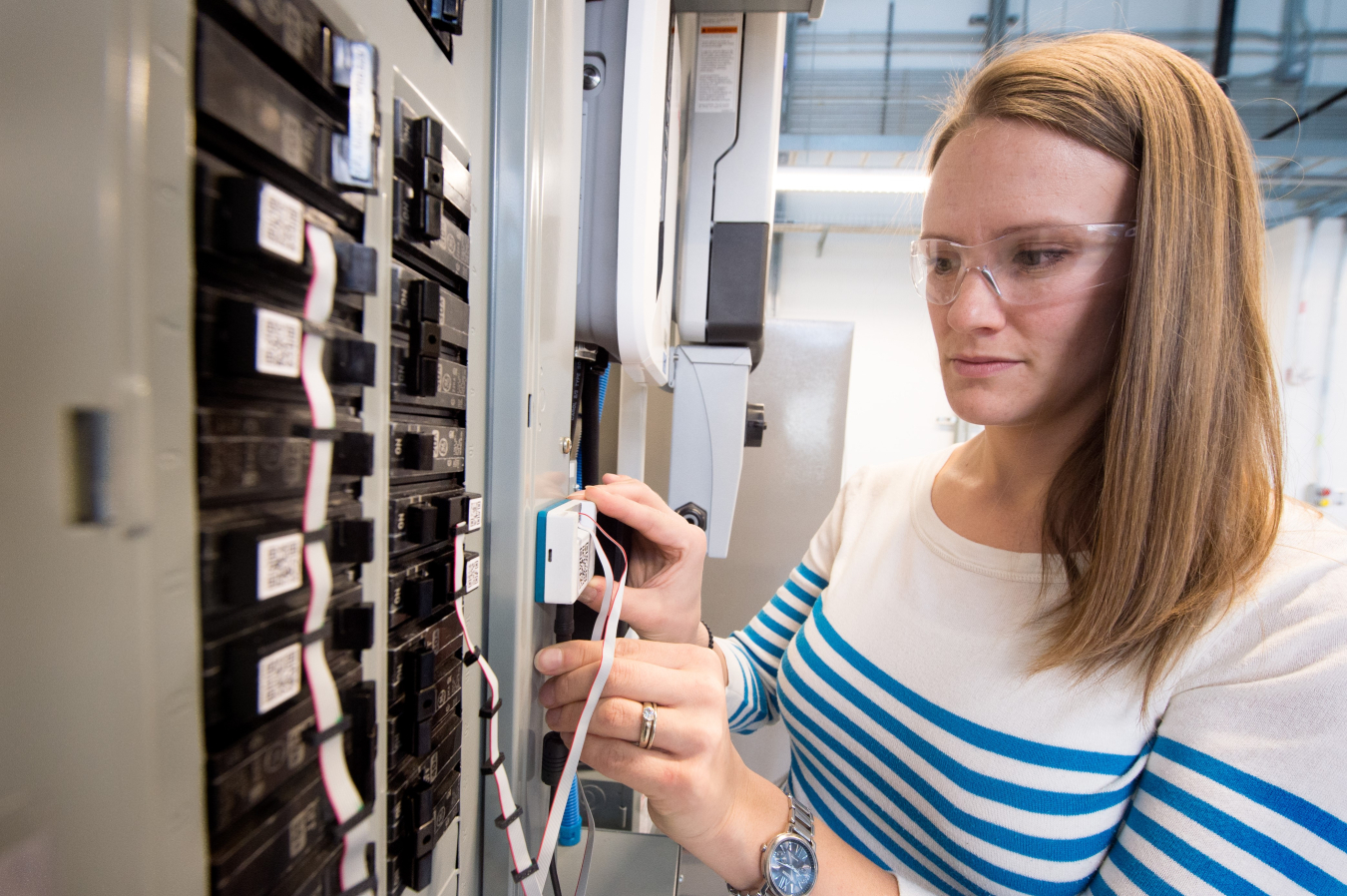Learn why Bethany Sparn loves her job as a senior research engineer in the Residential Buildings Research Group at the National Renewable Energy Lab.
December 13, 2019
Bethany Sparn is a senior research engineer in the Residential Buildings Research Group at the National Renewable Energy Laboratory (NREL). Bethany joined the lab in 2010 and has been primarily focused on laboratory research related to connected building loads, residential HVAC equipment, heat pump water heaters, and automated home energy management devices. She designed and manages a laboratory test bed for evaluating home energy management systems, demand response strategies, distributed energy resources, smart appliances, and other innovative sensors and controllers. She came to NREL after completing her master’s degree in mechanical engineering at Colorado State University, focused on how biodiesel emissions vary with the feedstock oil.
What inspired you to work in STEM?
As a kid, I loved math and science, I loved nature, and I loved learning how things worked, so ending up in STEM always seemed obvious. I also benefited from being raised in a family full of people in STEM—in particular, women in STEM. My mom is a high school math and science teacher, my grandmother was a physicist at the Bureau of Standards, and her mom was a mathematician. I was inspired by the amazing women in my family, but also felt comfortable in math and science from an early age. It never occurred to me that fewer girls went into STEM until I went to college.
What excites you about your work at the Energy Department?
I always knew that I wanted to do something related to STEM, but I didn’t know what until I started reading about renewable energy in college. That was a major epiphany in my life; I have always been a tree hugger at heart and the idea that I could use my interest in math and science to help save the world was a no-brainer. Once I got interested in renewable energy, any project that I worked on in school—regardless of the technology—led me to research produced by NREL. I wanted to work at NREL because people there were working on everything exciting to me. After being at NREL for nearly 10 years, I am just as excited about the work we are doing. My job is constantly changing, I’m always learning, and I get the opportunity to work with many different departments around NREL and with companies and utilities that are working to change the world.
How can our country engage more women, girls, and other underrepresented groups in STEM?
STEM careers suffer from a lack of visibility, especially jobs like engineering. My 3-year-old son wants to be a firefighter or construction worker because he sees all the cool equipment associated with those jobs. Engineering is not a job that most 3-year-olds know about, but it can include way better toys than construction.
In addition to bringing more attention to STEM careers in general, the big-picture impact is a critical piece that needs to be communicated with women and girls. Women tend to be drawn to careers with some sort of societal benefit—doctors, teachers, nurses. STEM careers can have similar impacts: researching new forms of renewable energy, developing technology to provide clean water, or creating new medical devices that can improve quality of life. Understanding how I could use an engineering degree to advance efficiency and renewable energy technology was the catalyst I needed to get excited about STEM. Telling the full story about careers in STEM will make them more appealing to many young people, including young girls.
Do you have tips you'd recommend for someone looking to enter your field of work?
Ask to participate—seek out opportunities to get involved in work that you find interesting and ask to be included. Don’t wait for someone to invite you. My first opportunity to work on renewable energy came when I was an undergraduate student and I asked a professor that led energy research if he could use me in his lab. He was able to pair me with a graduate student working on an engine running on straight vegetable oil for application in developing countries, which is how I ended up working on engines for my master’s degree. I would never have had that opportunity if I hadn’t asked for it.
Think creatively about how your background can be applicable. The work to be done in energy research is very broad and you might not realize how your background can fit in. There are many jobs outside of the traditional science and engineering fields, so don’t be discouraged if your expertise doesn’t seem like an obvious fit.
When you have free time, what are your hobbies?
I have two small children, so my time for hobbies is less than it used to be, but I love being outside with them—hiking in the Colorado mountains, trips to local parks, or gardening in the backyard. Watching them explore the world is all I need to know that what I’m doing is important and valuable.
Learn more about our programs & resources for women and girls in STEM at http://www.energy.gov/women

